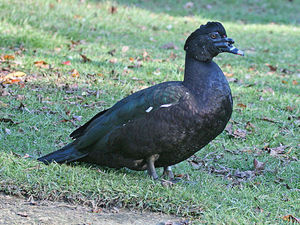Alpaca History
Three million years ago, members of the camel family (camelids) were native to central North America. During the Ice Age, the camelids migrated south and never returned to North America. As the centuries passed, the original camelid became the vicuna and guanaco, roaming wild in Bolivia, Chile, and Peru. Inhabitants in these areas domesticated the vicuna and bred them for their soft, thick coats. The vicuna developed into the alpacas of today.
Alpaca Temperament and Size
Alpacas make wonderful pets because of their gentle and easygoing nature. They are very cooperative and submissive, making them ideal as a family pet. Alpacas love to be around the family members and become attached to them. They never spit at people unless they are being teased but will spit at other alpacas.
Alpacas communicate by moving their ears and tails into different positions. Alpaca owners soon learn what the different positions mean. Alpacas also hum and make a shrill scream if they are frightened.
Adult alpacas are usually three feet tall to the shoulder or four and a half feet to the top of the head. They weigh about 16 pounds when they are born and grow to approximately 150 to 175 pounds as adults.
Training Alpacas
Alpacas are smart animals making them easy to train. Repeating a behavior four of five times is all the alpaca needs to learn the desired skill. Training an alpaca is very similar to training a dog. They learn how to walk with a lead and halter, get into a vehicle. Alpacas are able to ride in a station wagon or minivan.
Feeding Alpacas
Feeding alpacas is much cheaper than feeding most pets. They have three stomach compartments, just like sheep and cattle, chewing their cud. Alpacas require only two or three bales of hay every month. A veterinarian may recommend vitamin and mineral supplements for pet alpacas.
Best Climates for Alpacas
Pet alpacas thrive in almost any climate. When the weather is very hot, alpacas should be sheared and placed in a shady area with water sprinklers. Alpacas also do very well in cold weather but must be kept in a barn that is closed to winter weather conditions. For all other weather conditions, pet alpacas only need a three-sided shelter.
Alpaca Fleece
Pet alpacas are not only fun but are profitable, as well. It’s soft, dense fleece is used for making yarn, fabric, and even stuffed animals. Raising alpacas for fleece or breeding is an expensive venture but can be profitable over time. A small herd is needed for both breeding and shearing, so most alpaca owners stick to owning one or two as pets.
Alpaca Cost
The cost of alpacas depends upon their qualities and if they are being raised for fleece, breeding, or stud. A gelded alpaca male can cost as little as $500.00, while a female used for breeding can cost as much as $20,000.00.
Pet alpacas usually range from $500.00 to $1500.00. Research many different alpaca farms before purchasing your pet to find the best price for your budget.
Resources:
Phil Switzer, Switzer Land Farm, “Alpacas: Just the Facts”
Rock Ridge Alpacas




